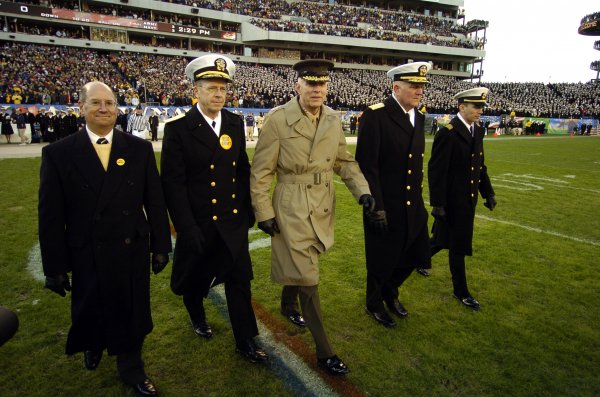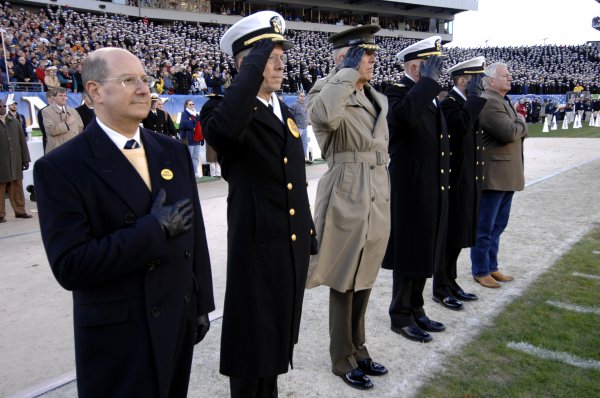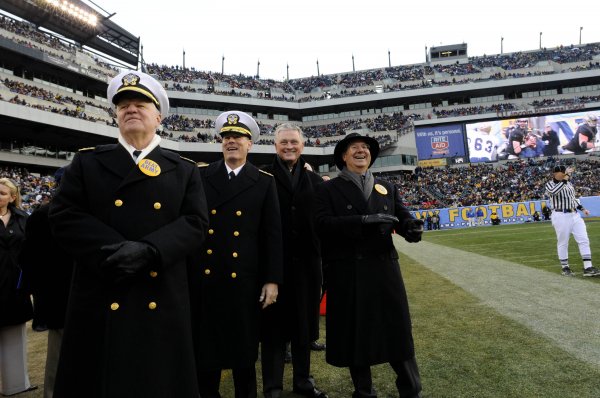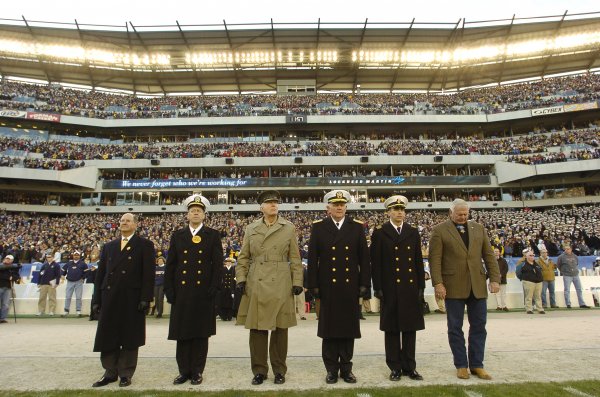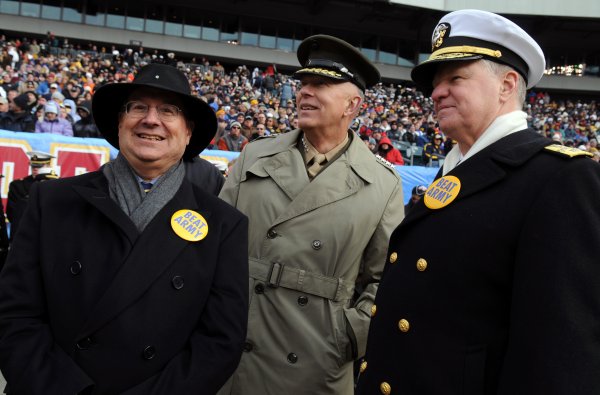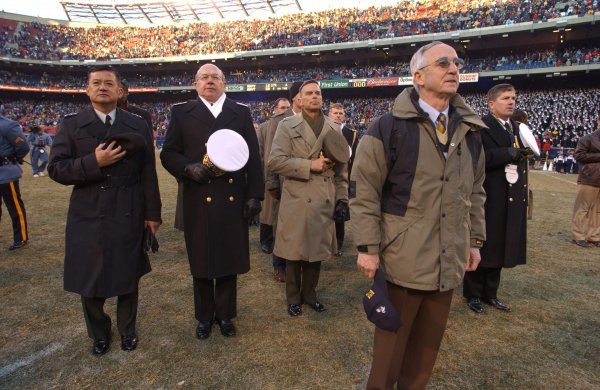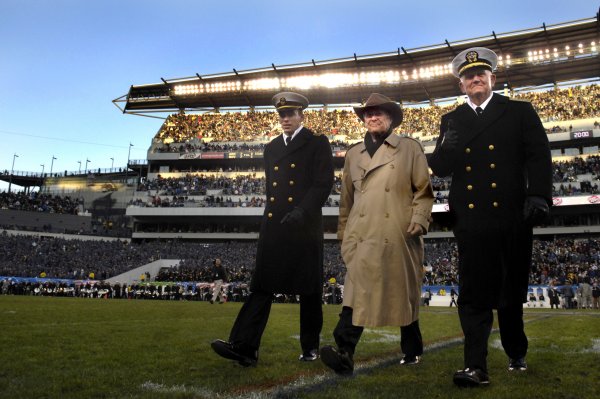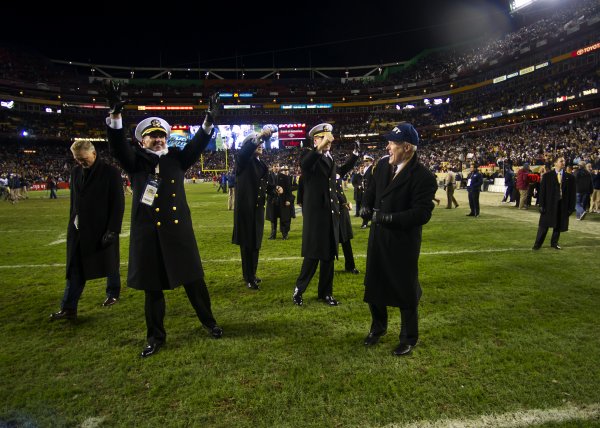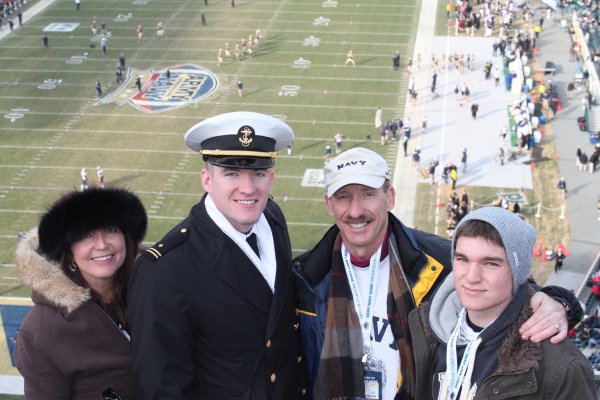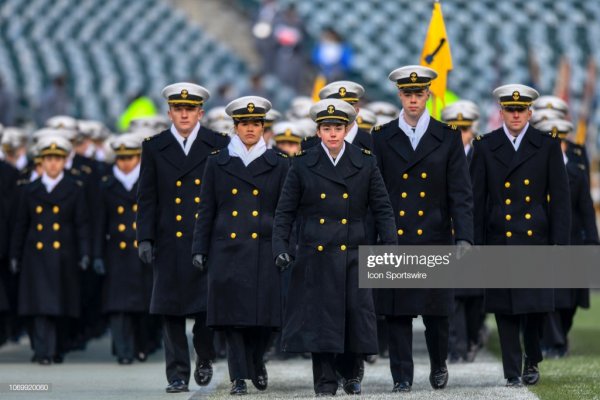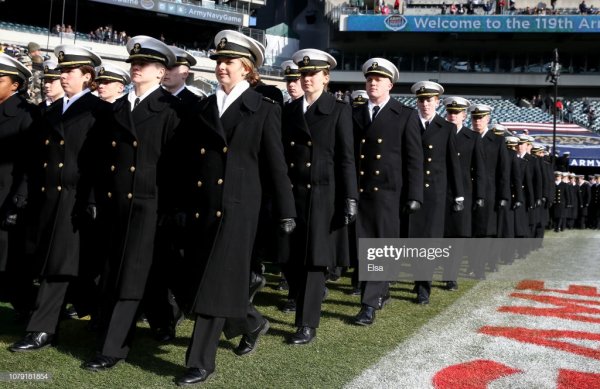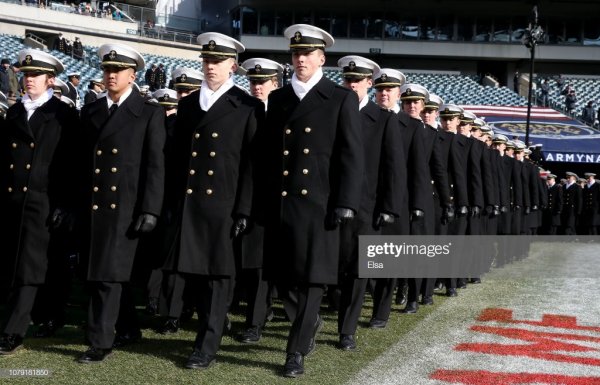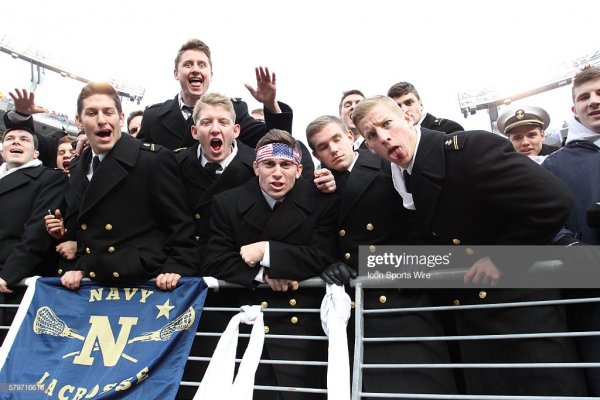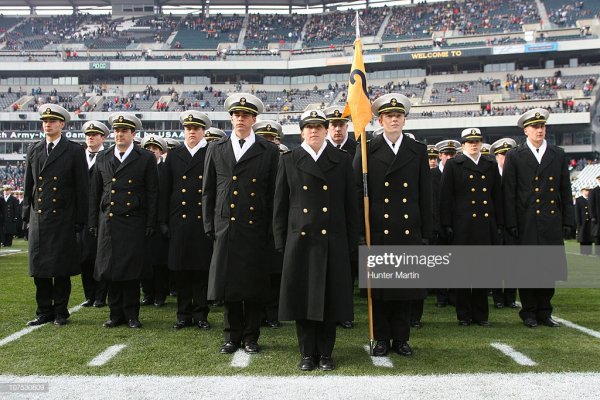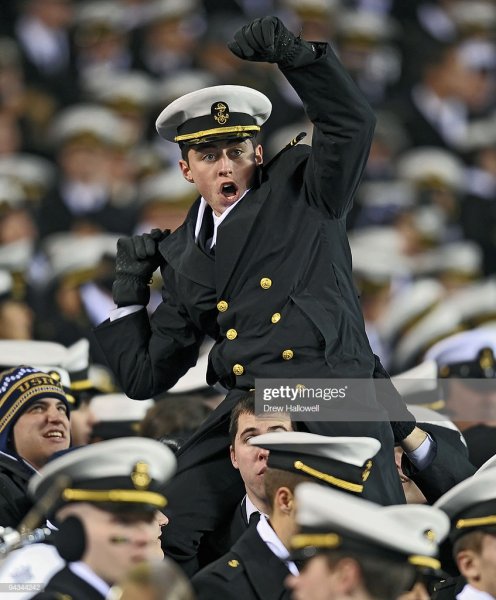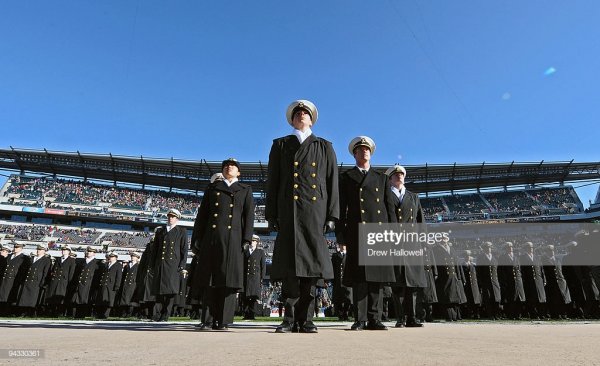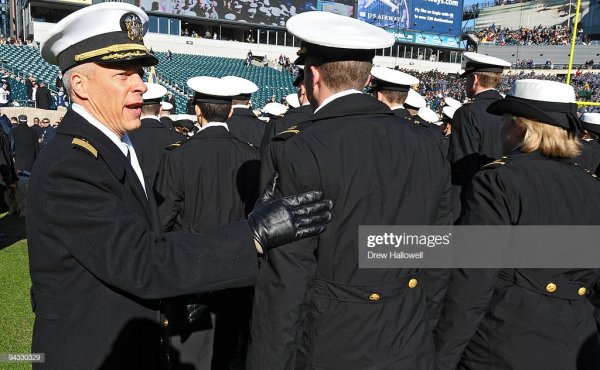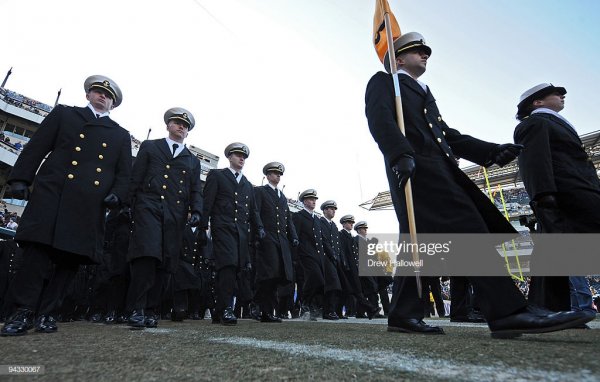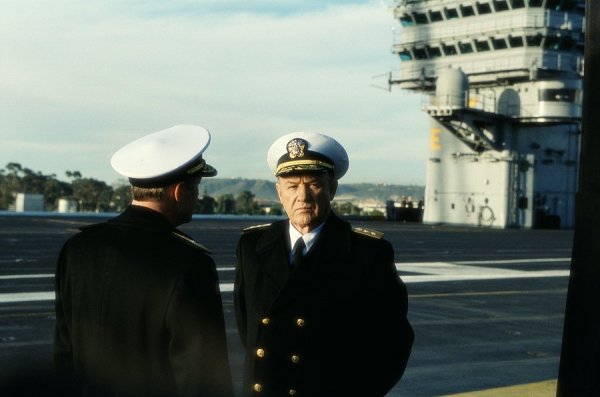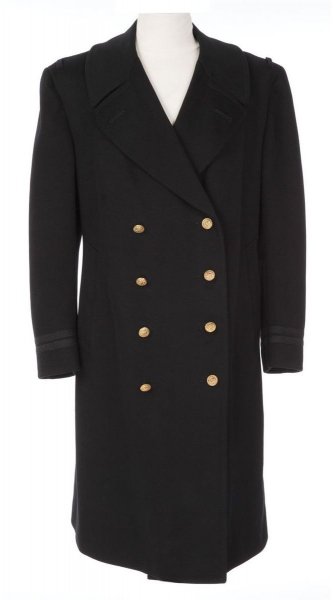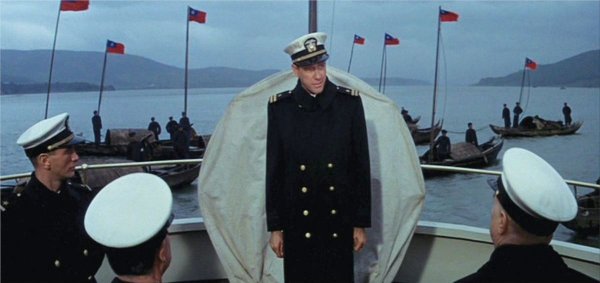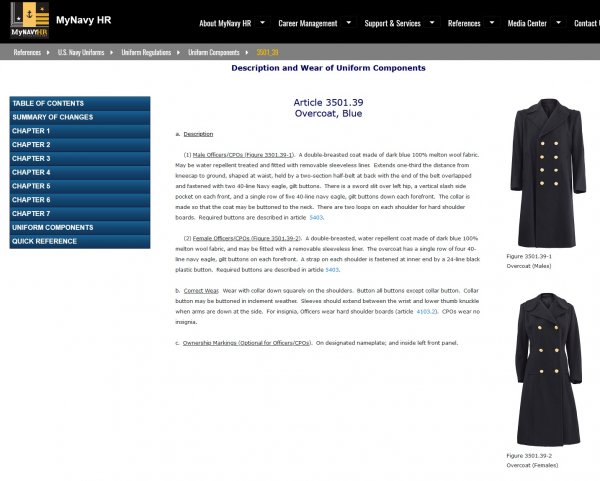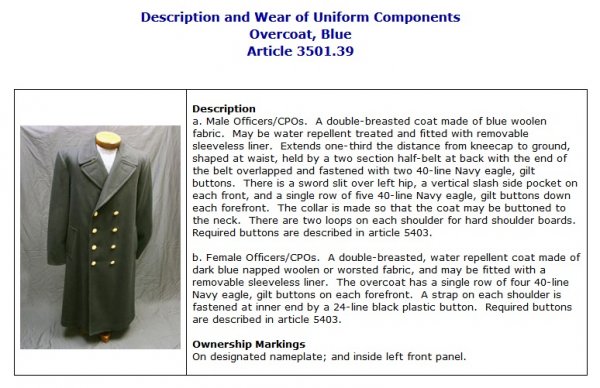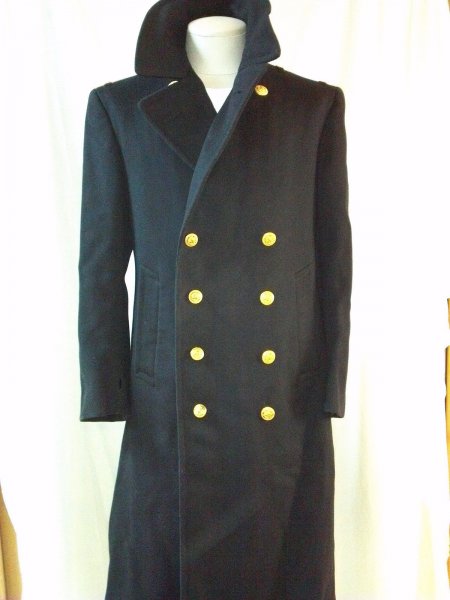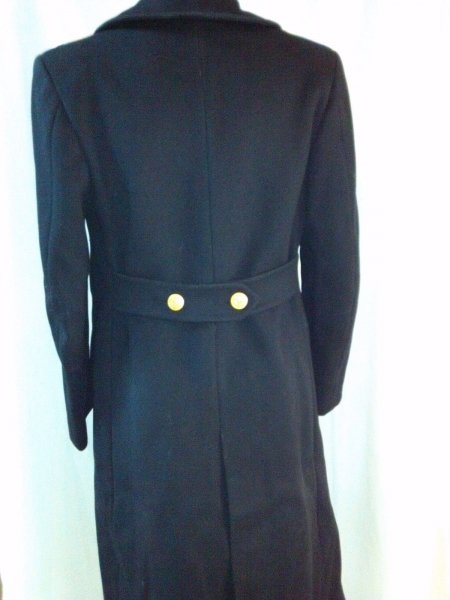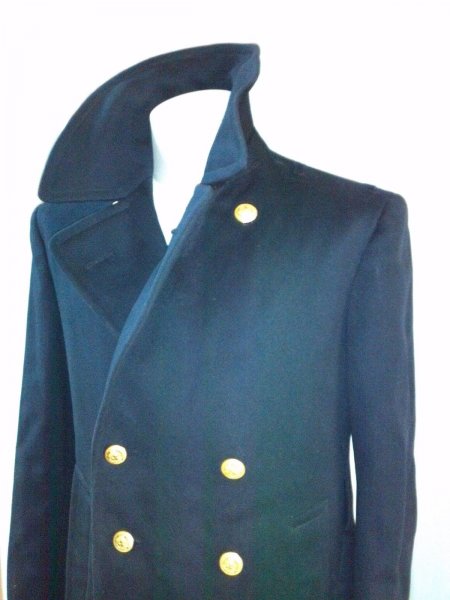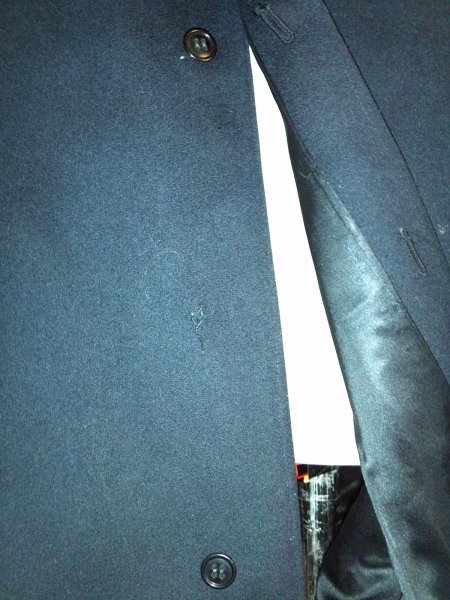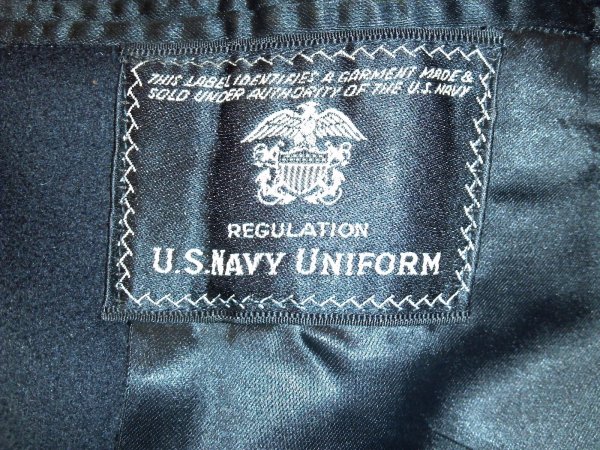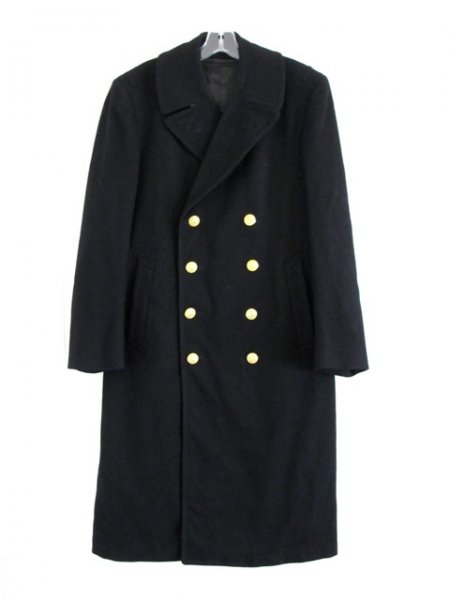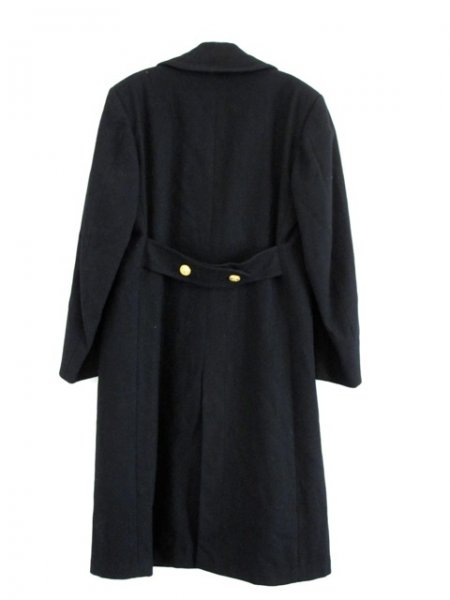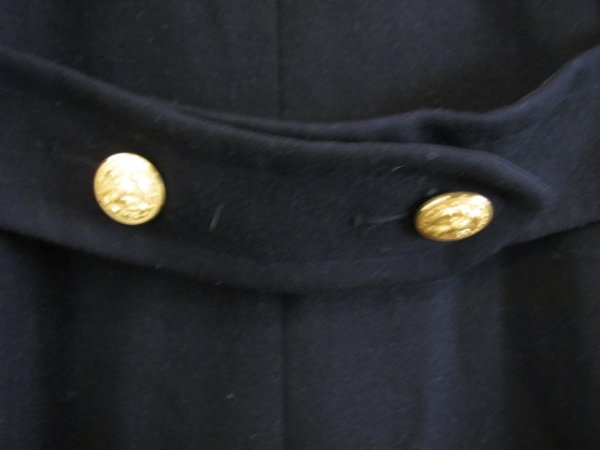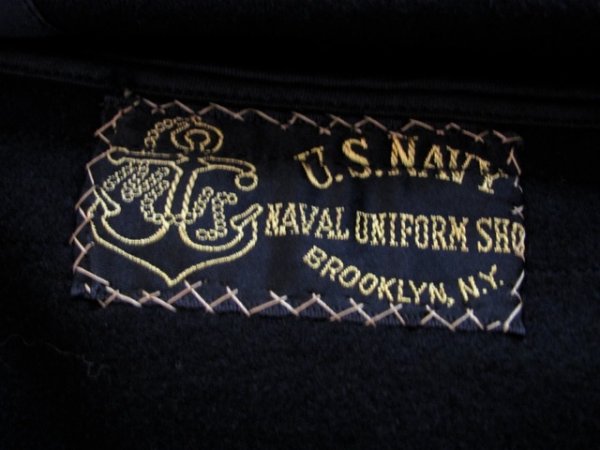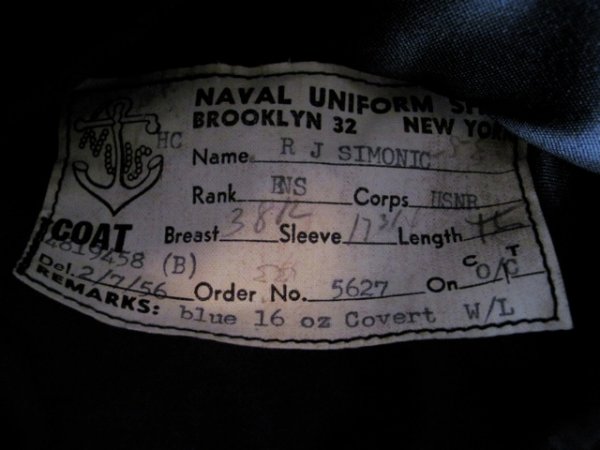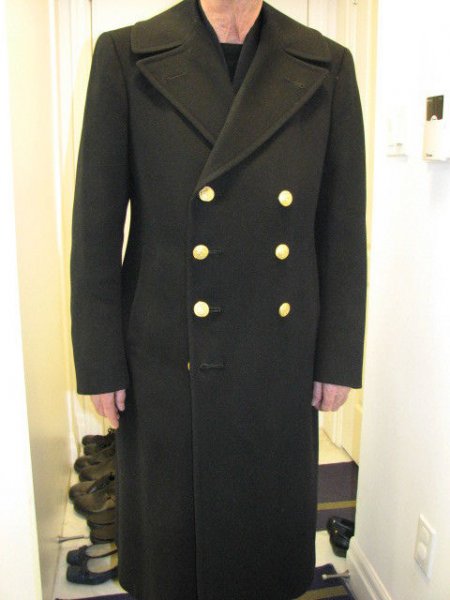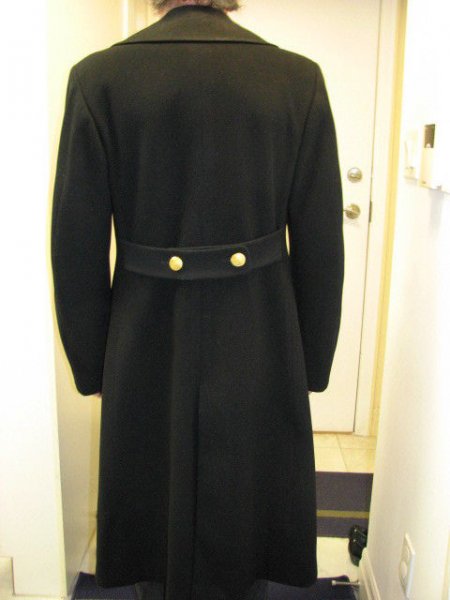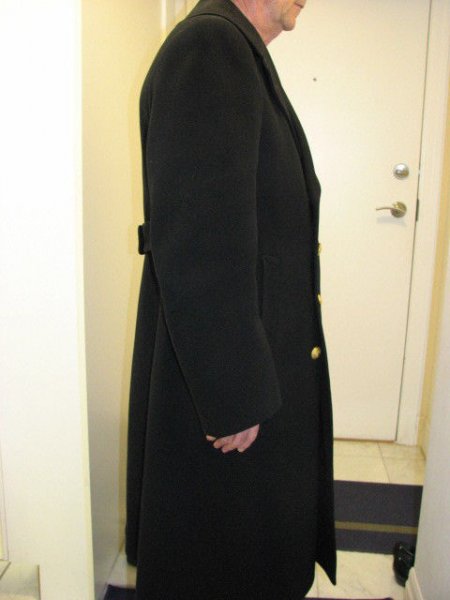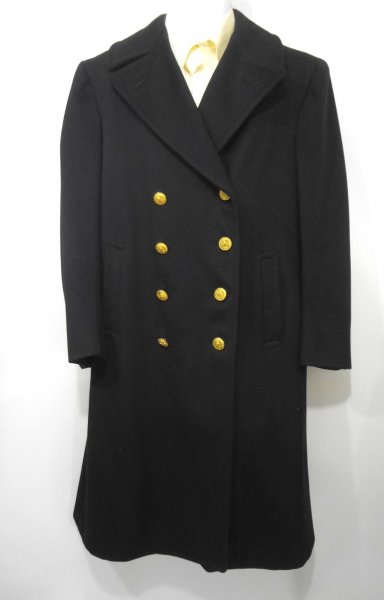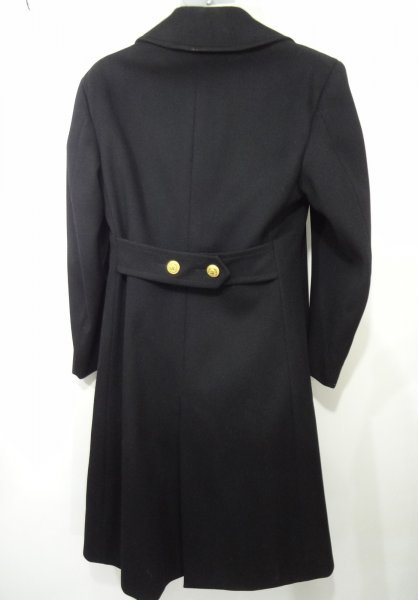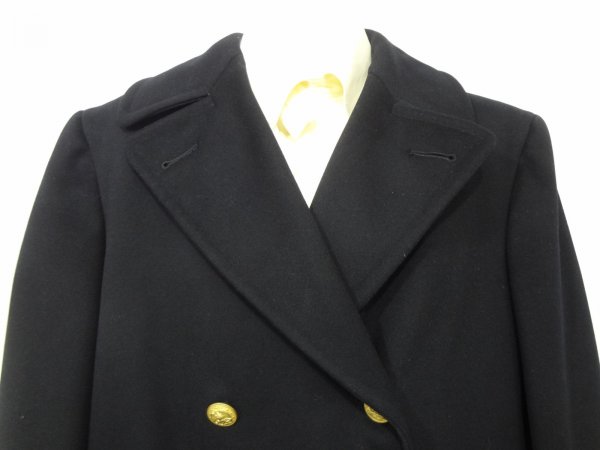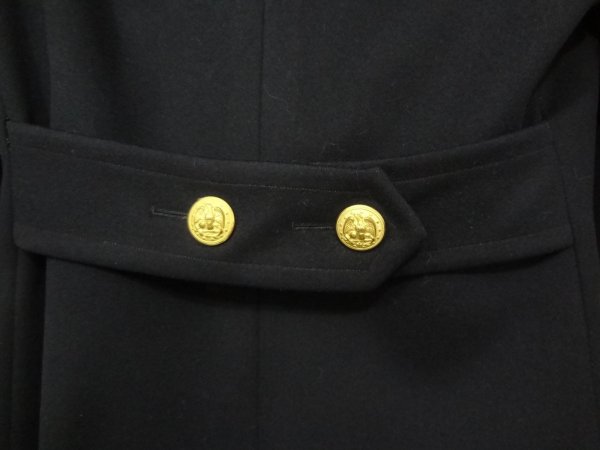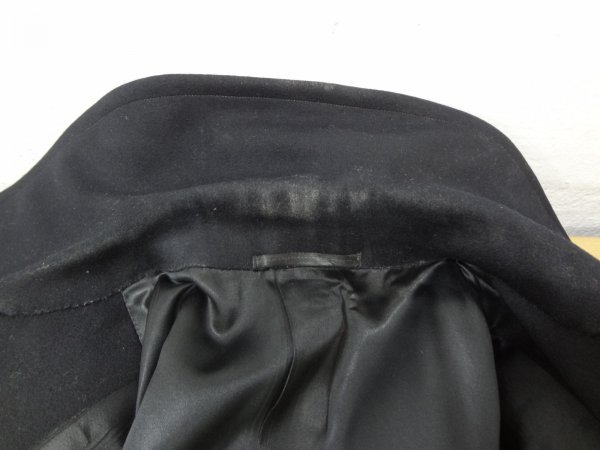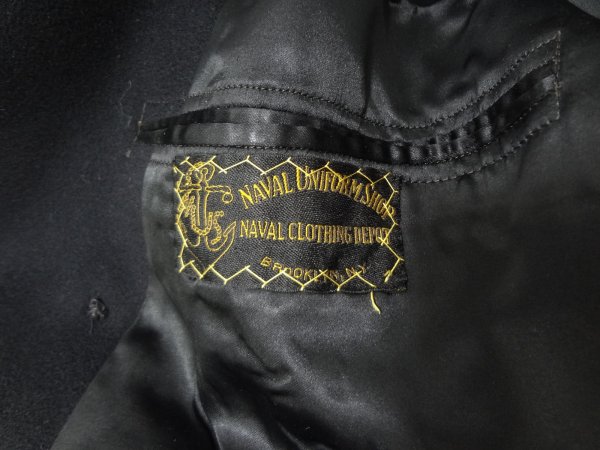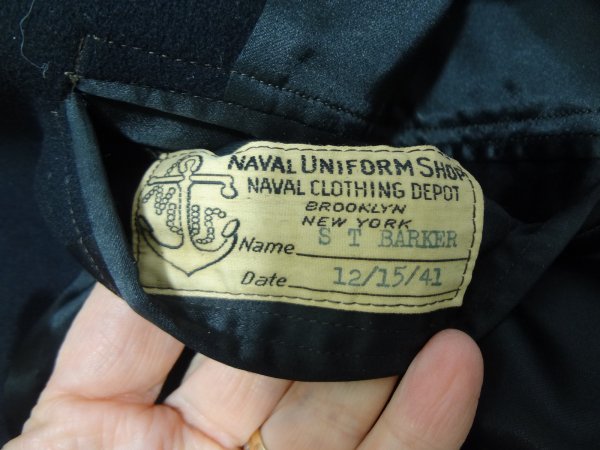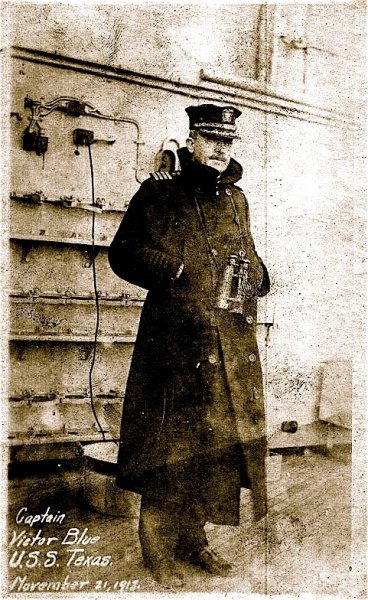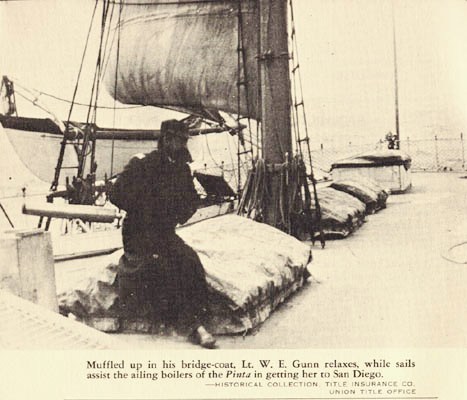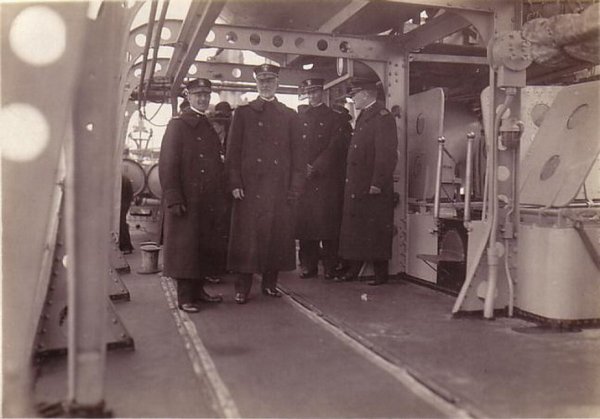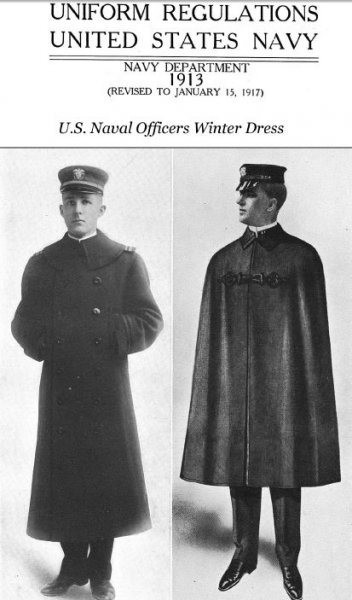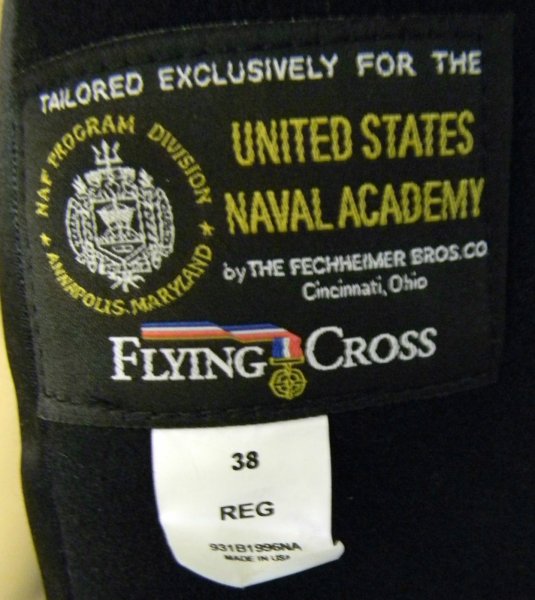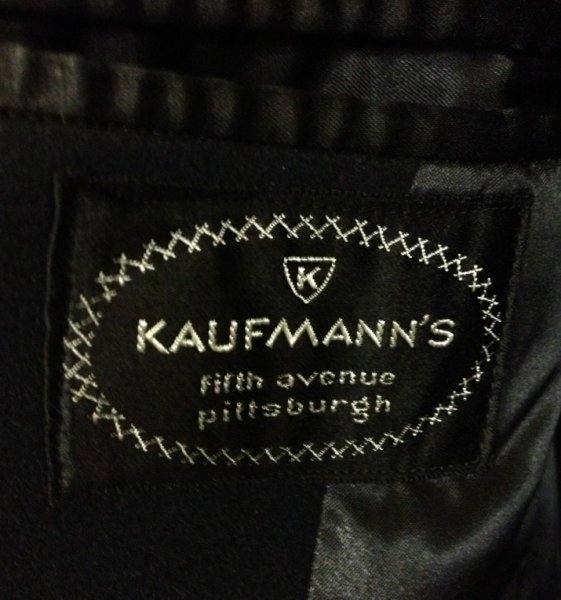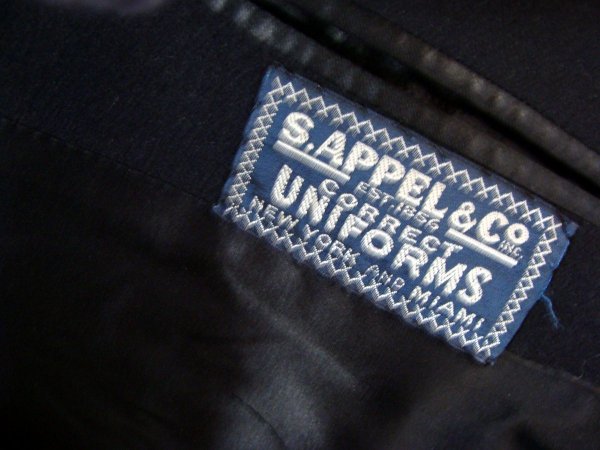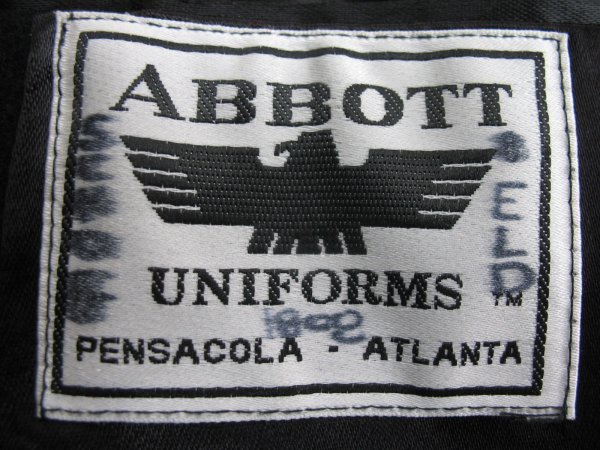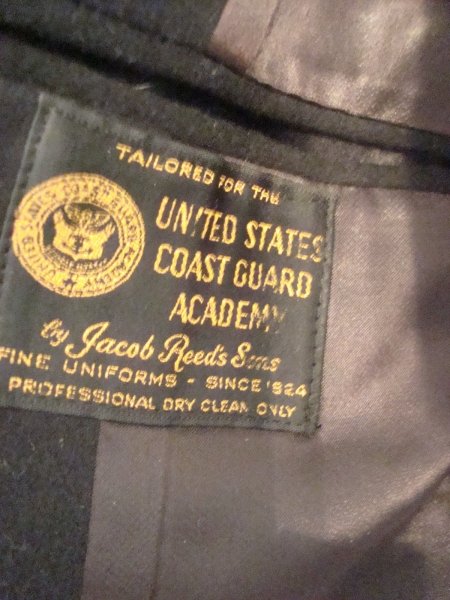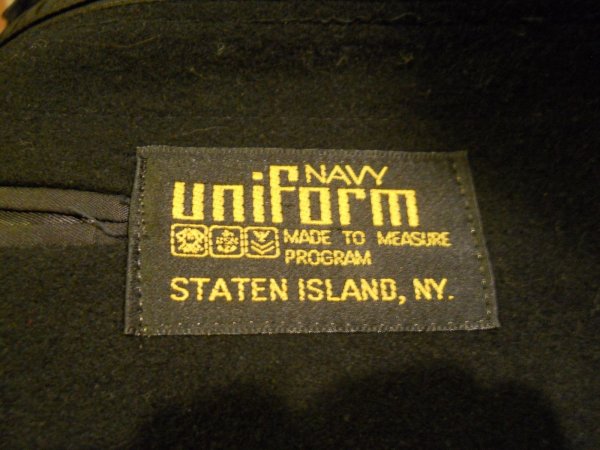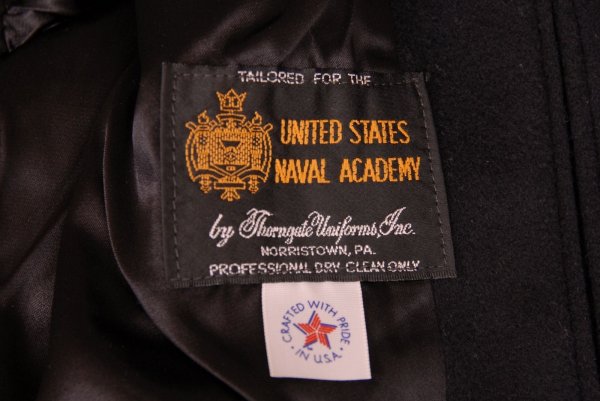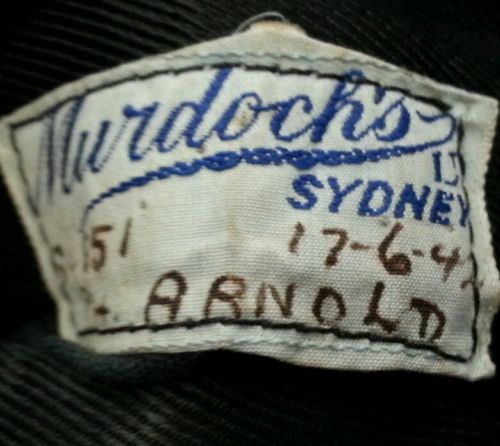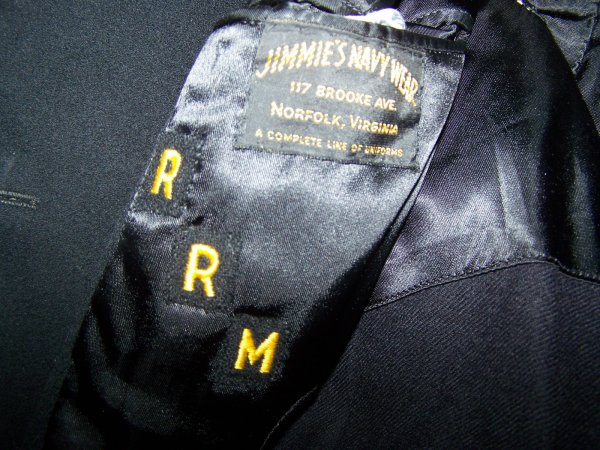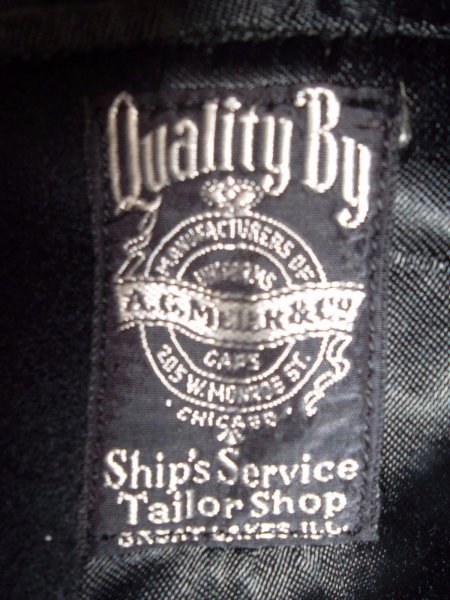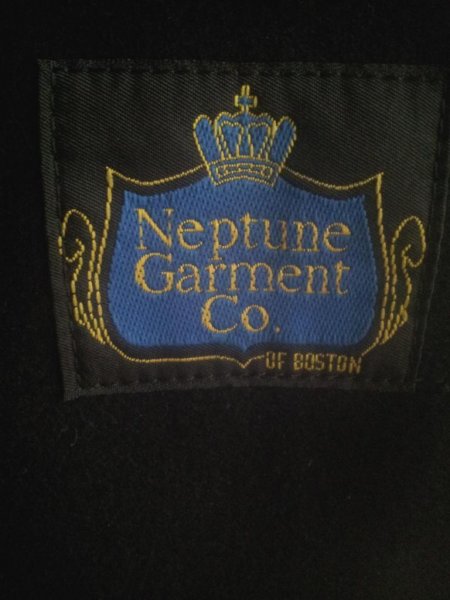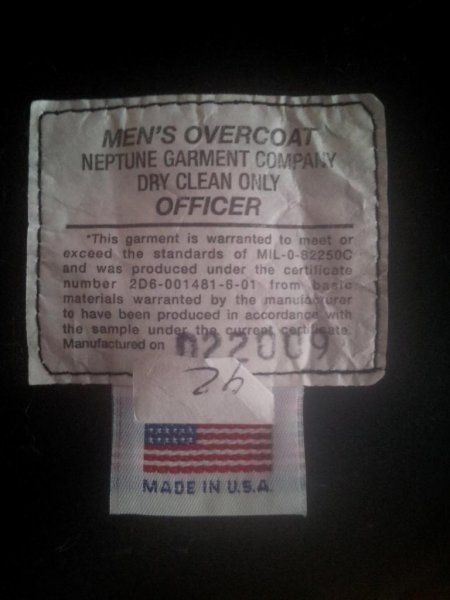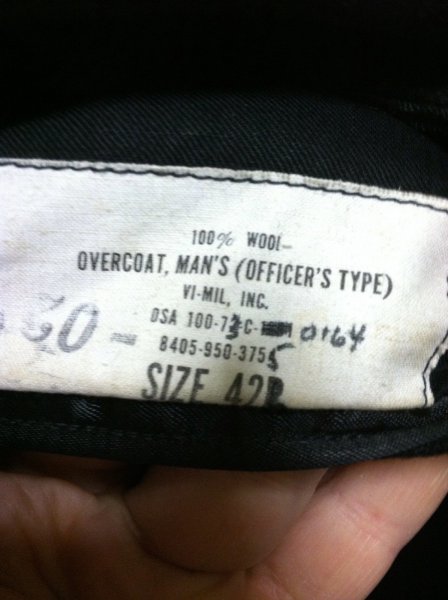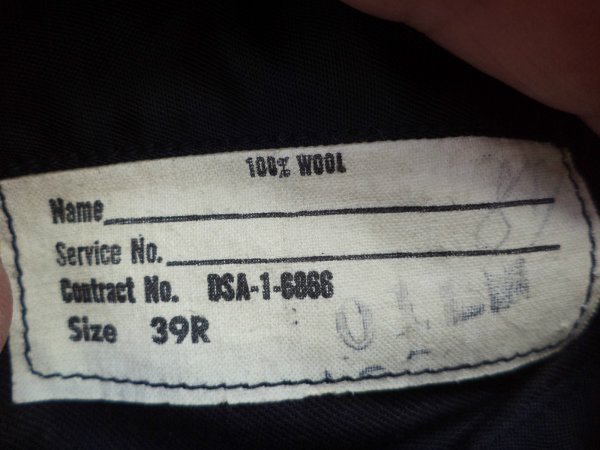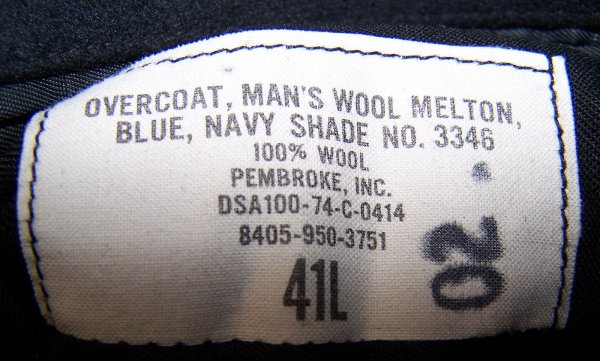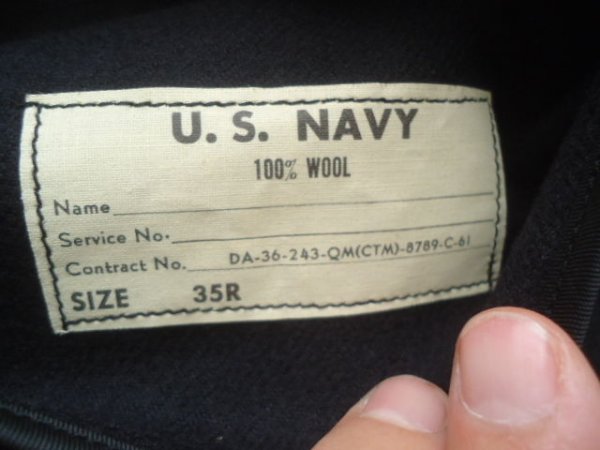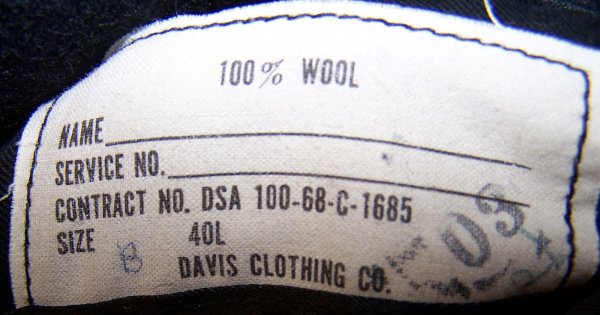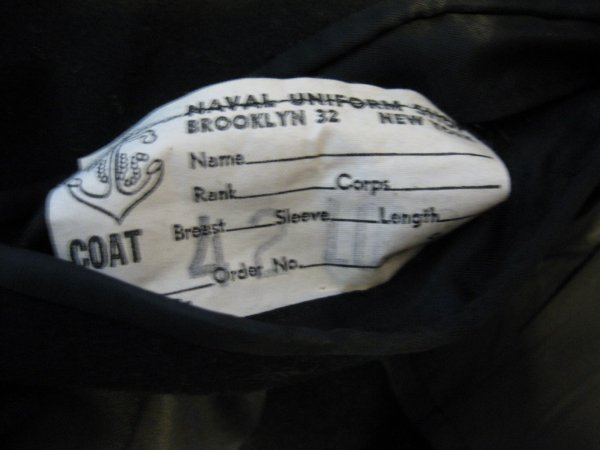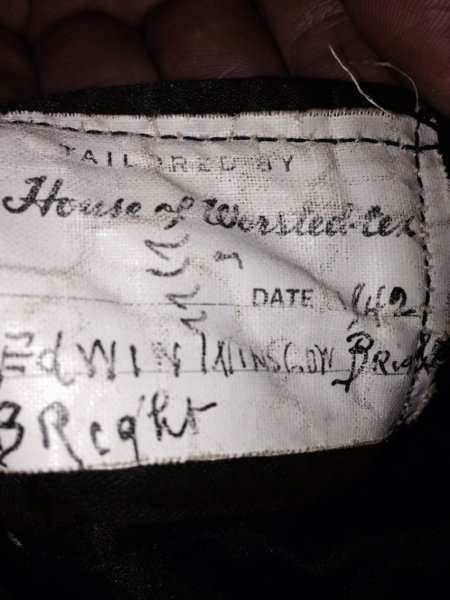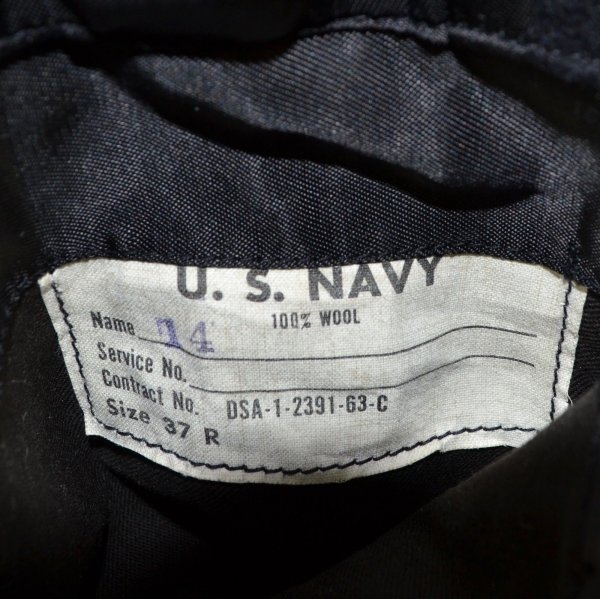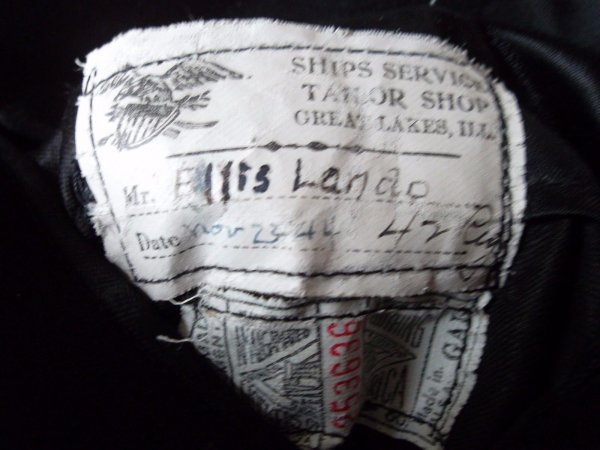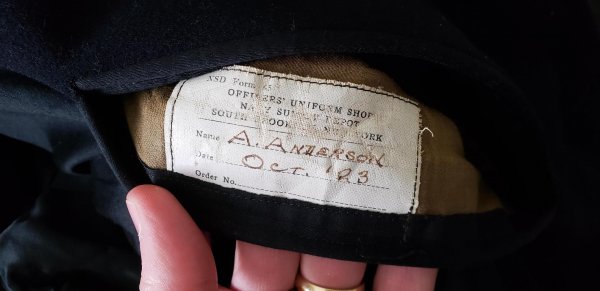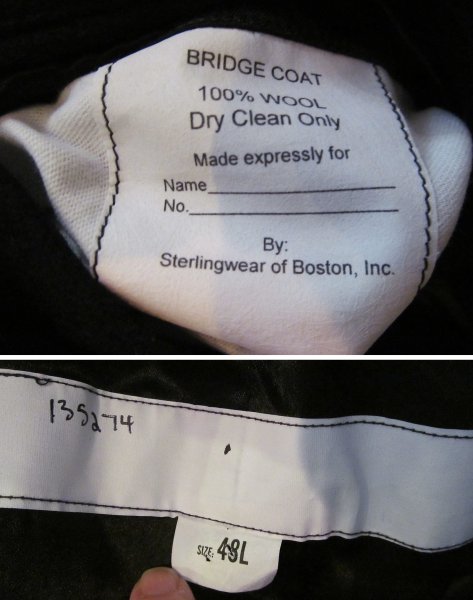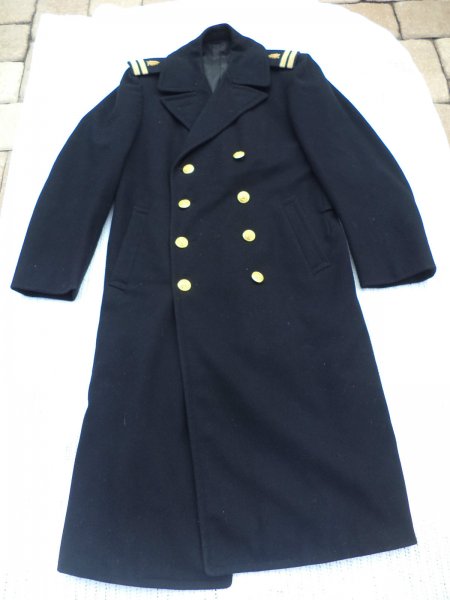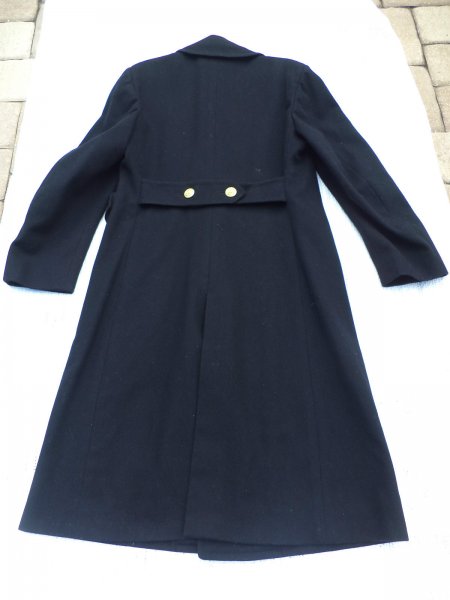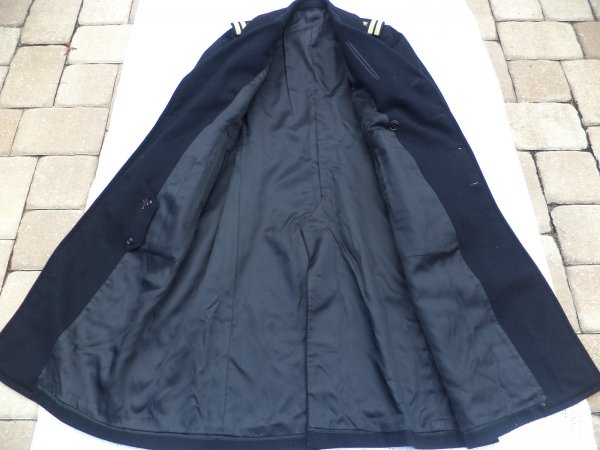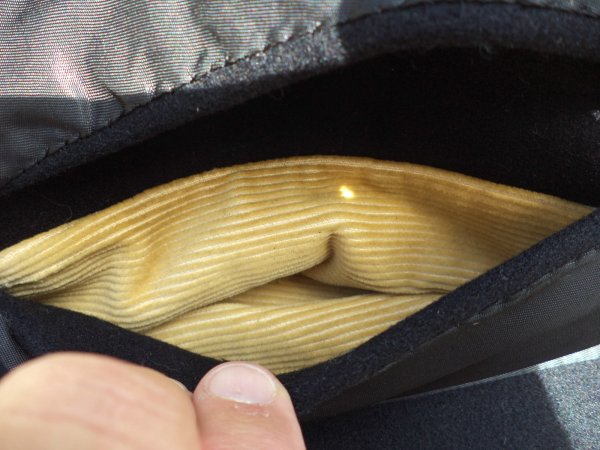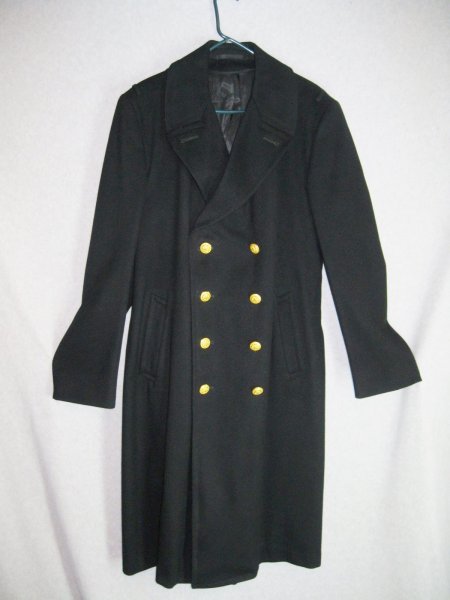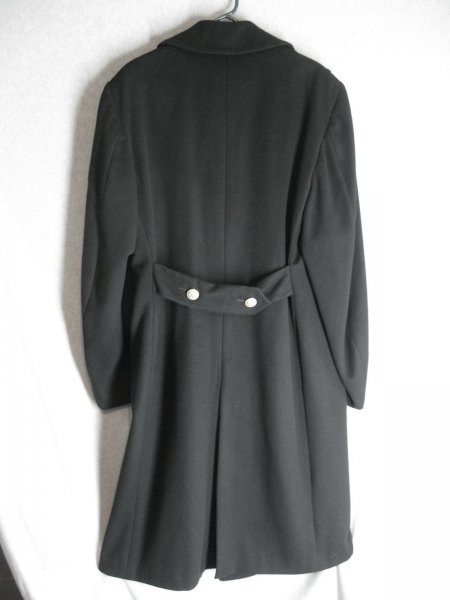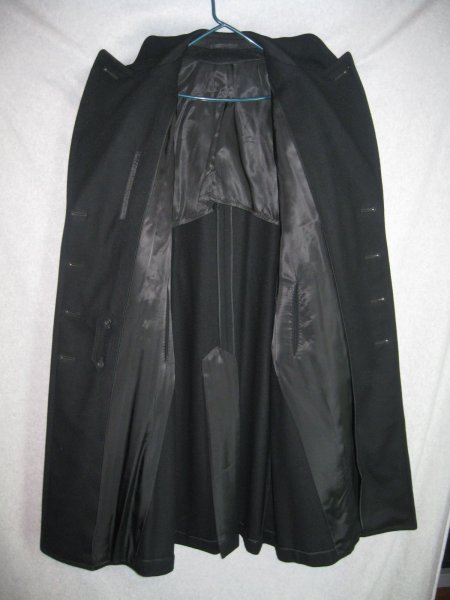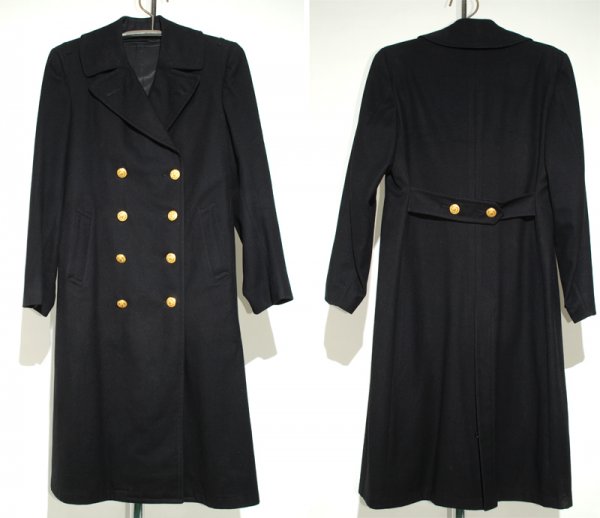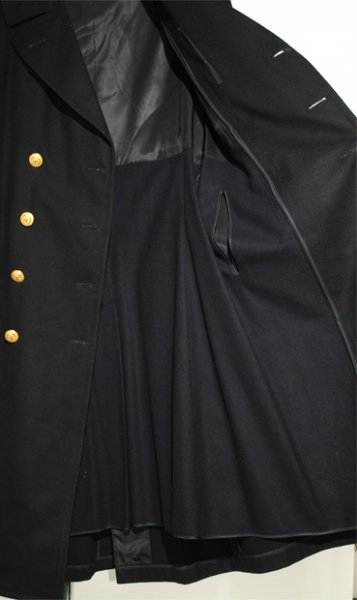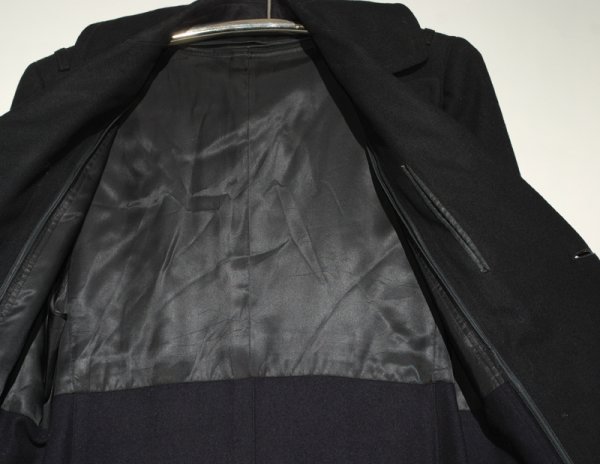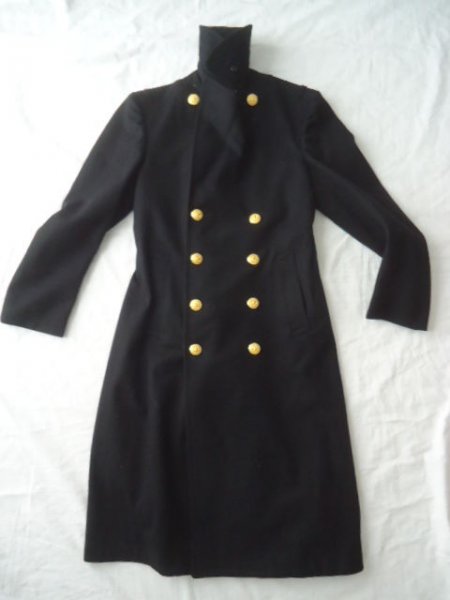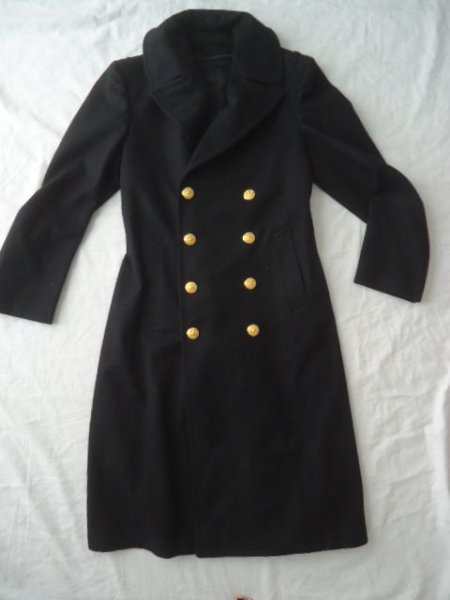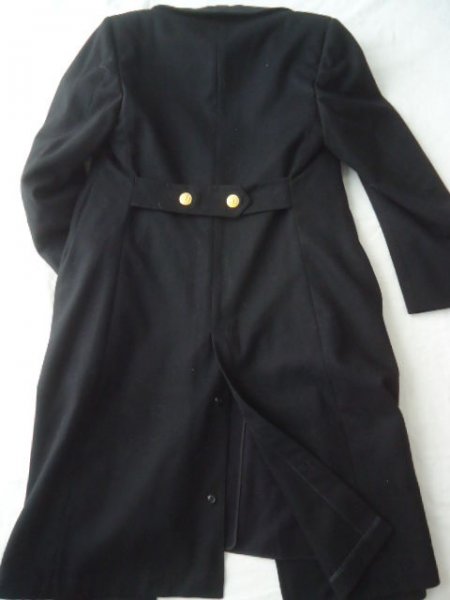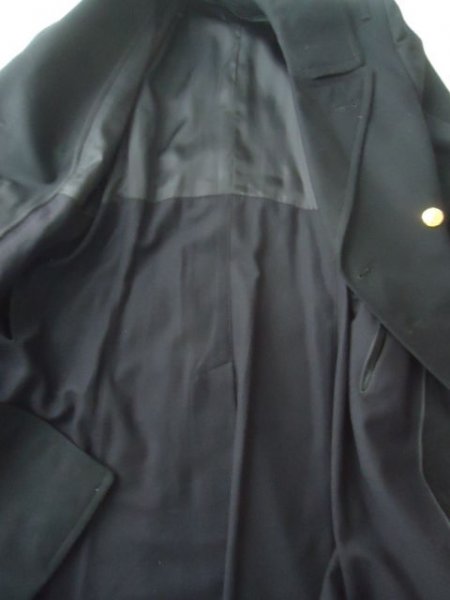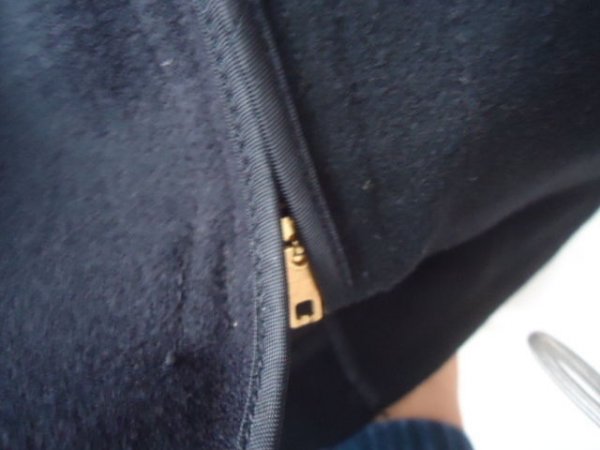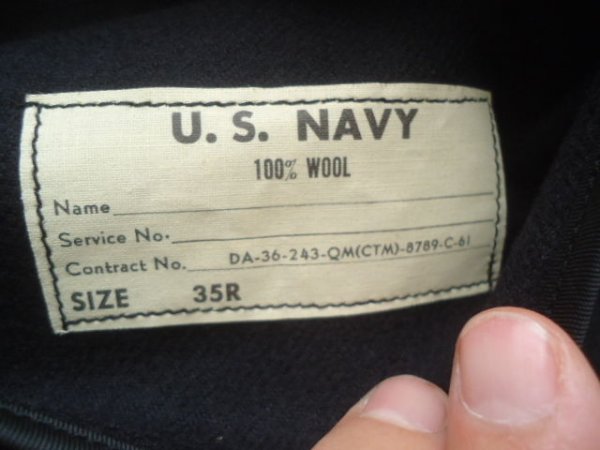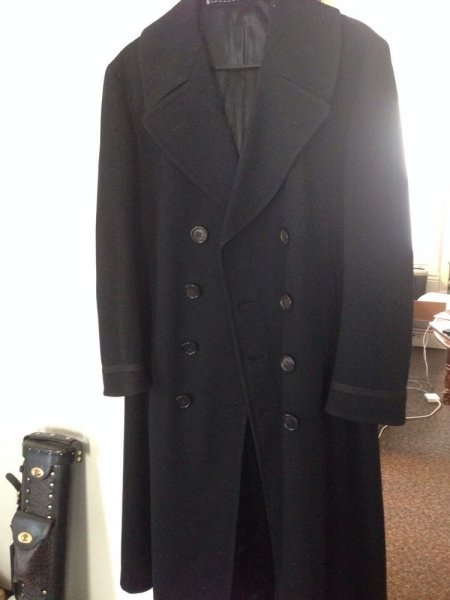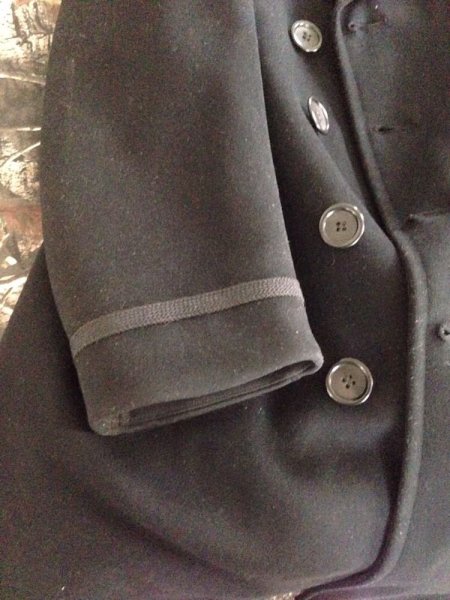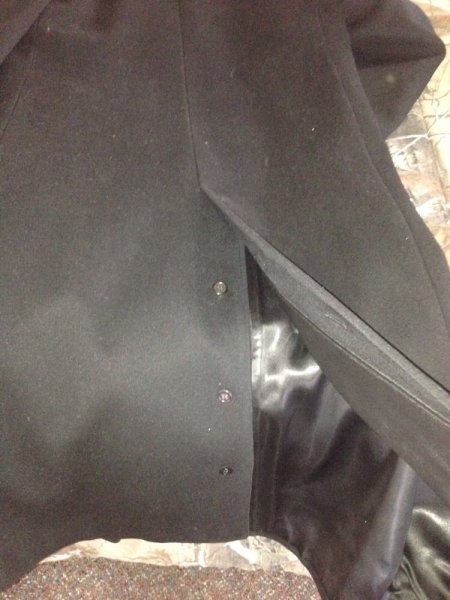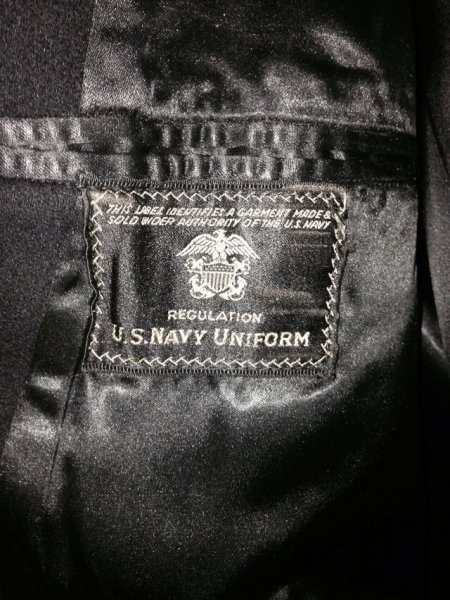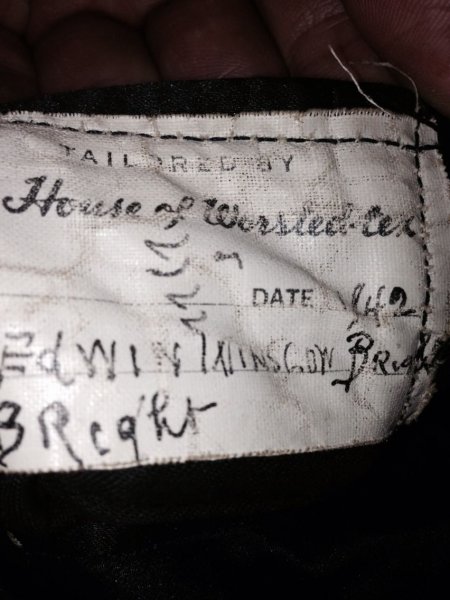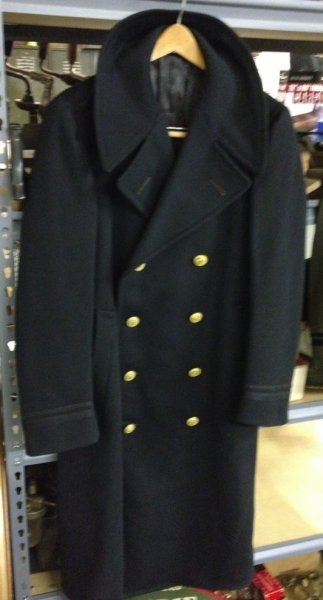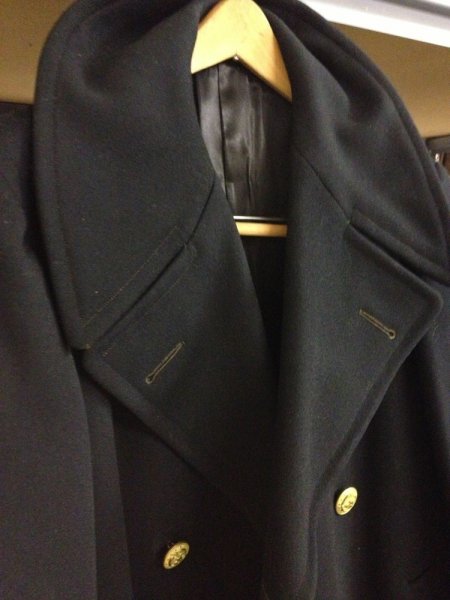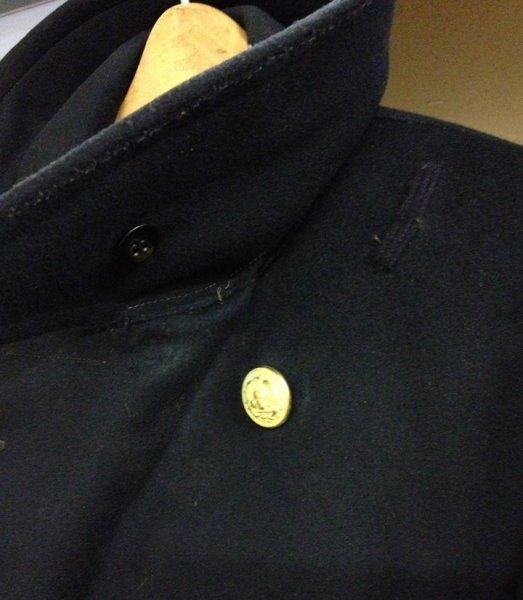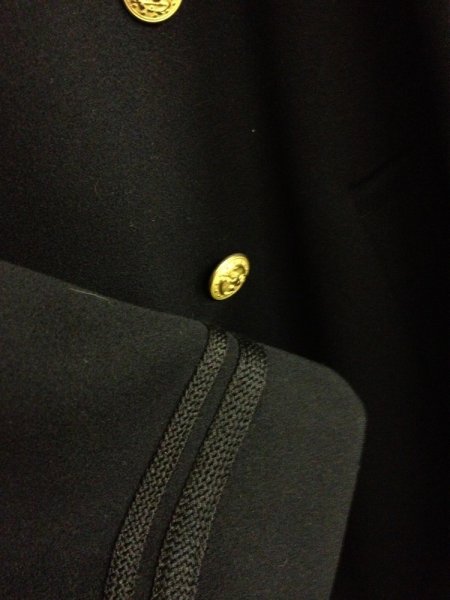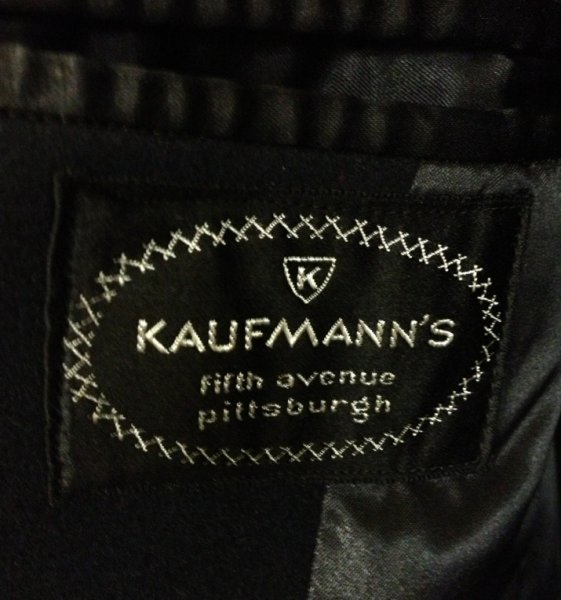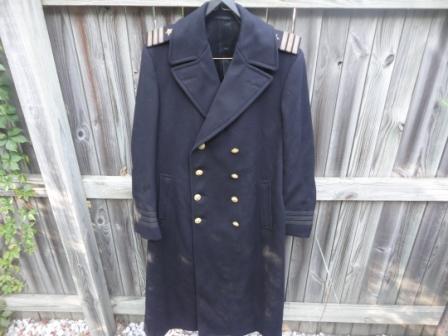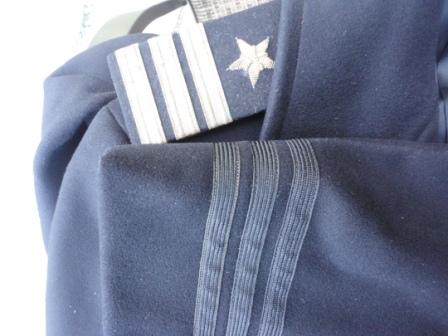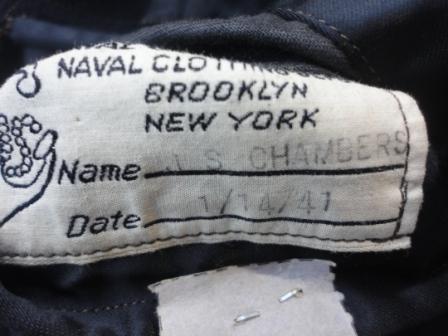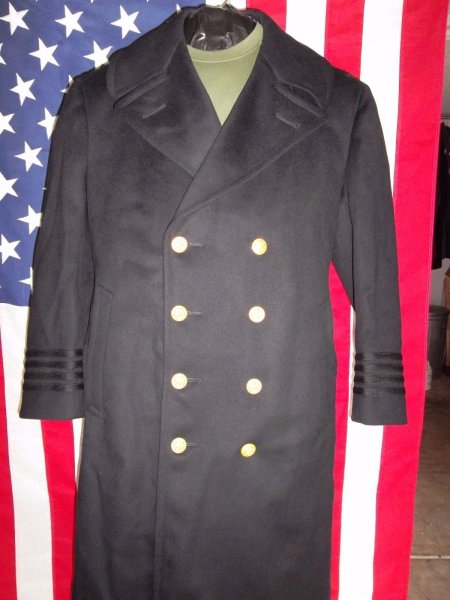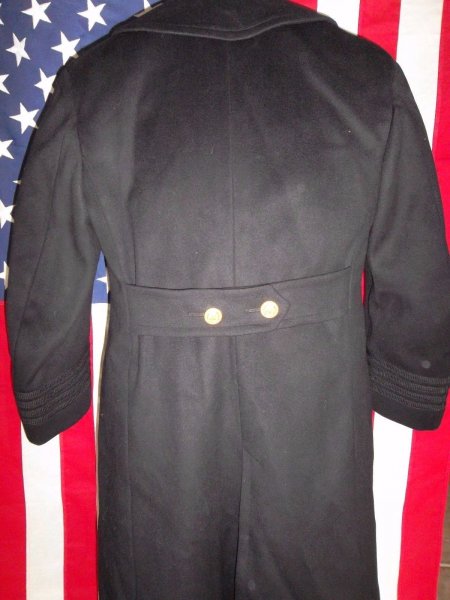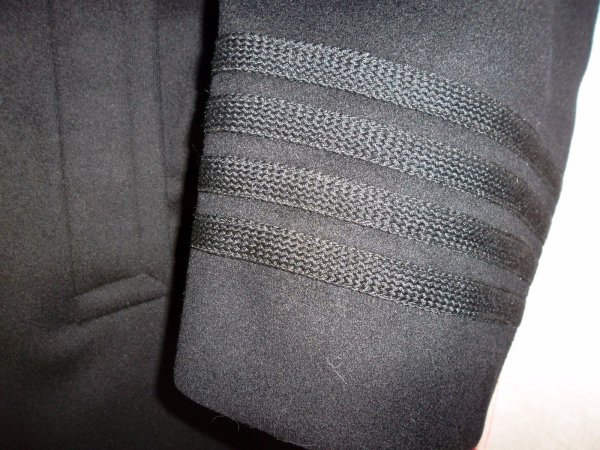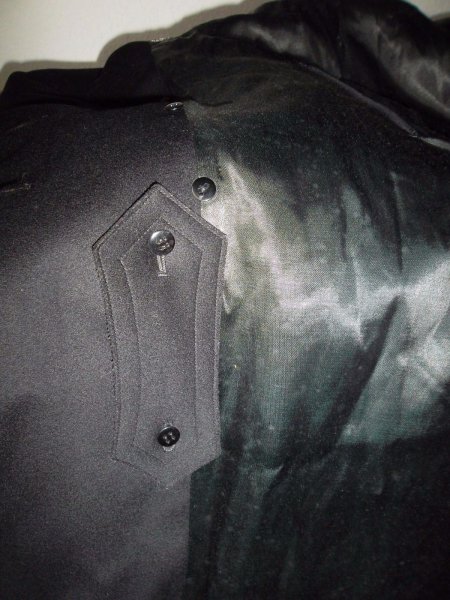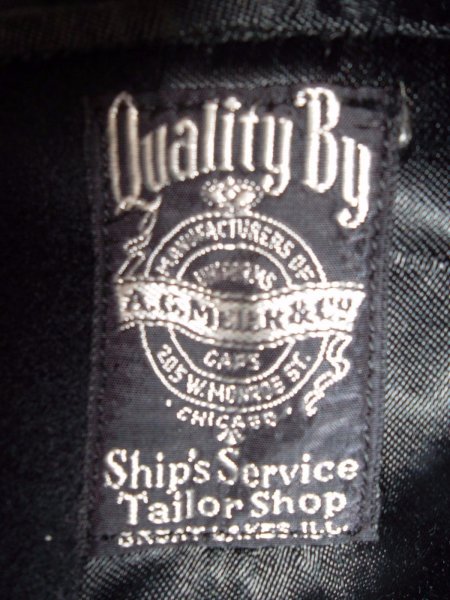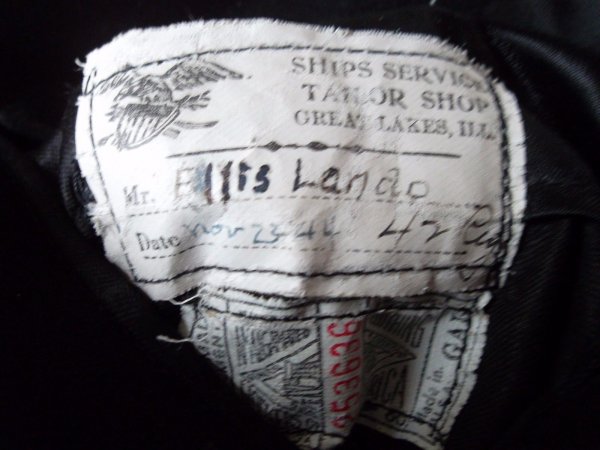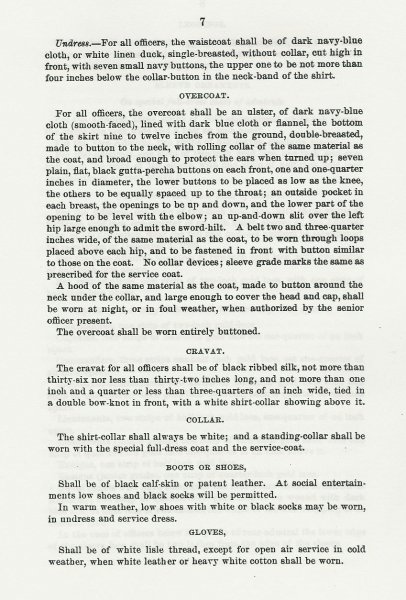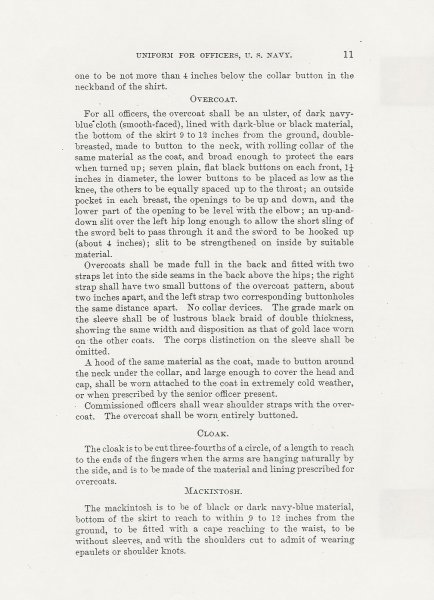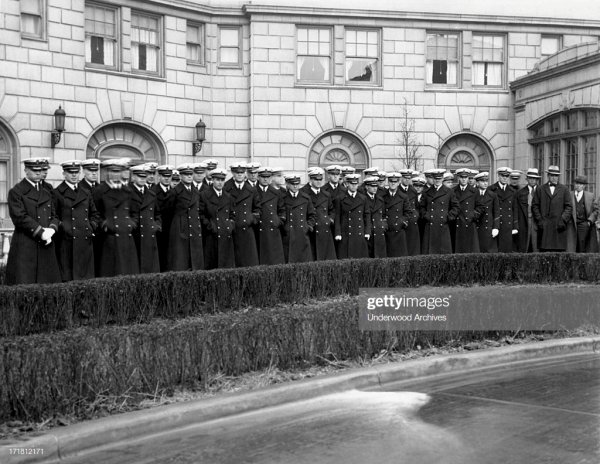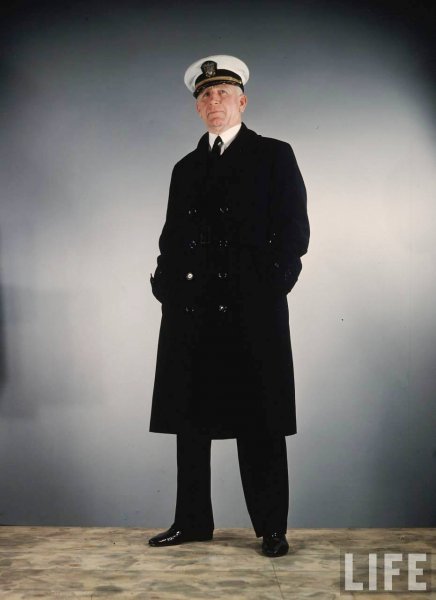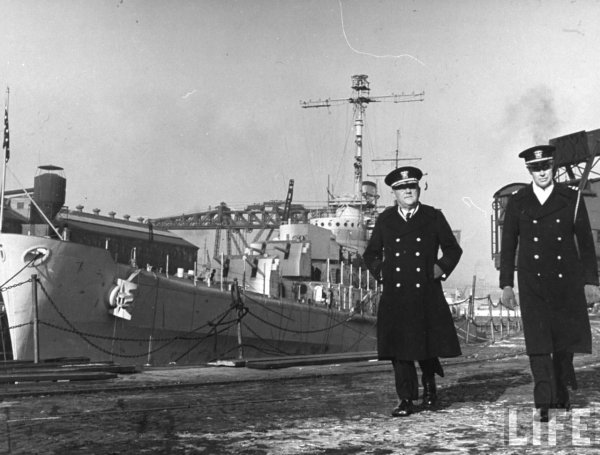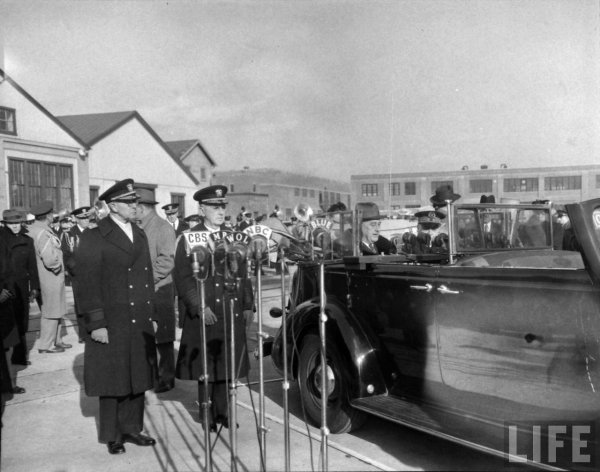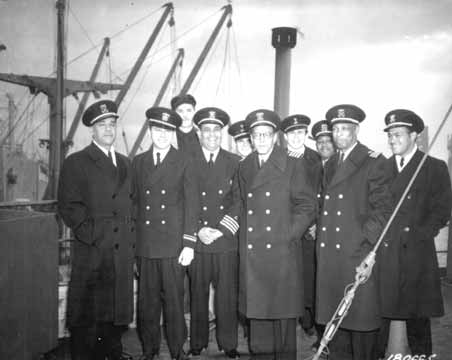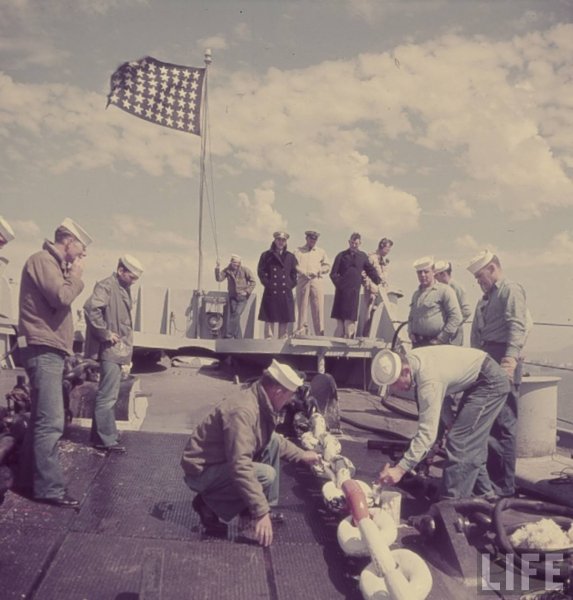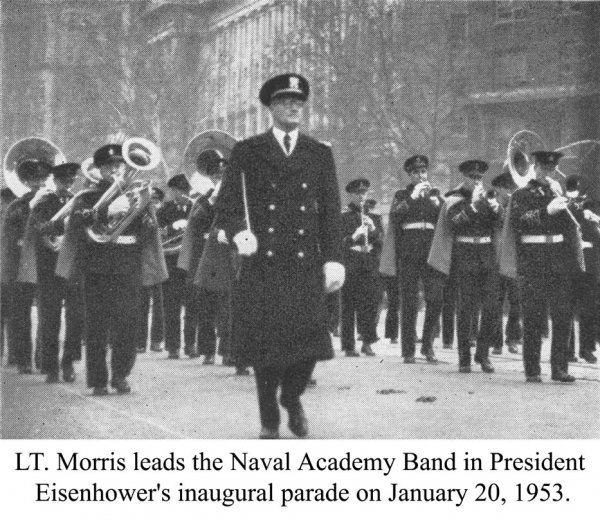Doctor Damage
I'll Lock Up
- Messages
- 4,324
- Location
- Ontario
Let’s start with some official definitions. These are from 1998. Here’s the link I used: http://timemilitary.files.wordpress.com/2011/07/unif-navy.pdf
If anyone has updated info, please post it in the main Bridge Coat thread in Outerwear: https://www.thefedoralounge.com/threads/u-s-navy-bridge-coats.75498/.
39. OVERCOAT, BLUE
a. Description
(1) Men Officers/CPOs.
A double-breasted coat made of blue woolen fabric. May be water repellent treated and fitted with removable sleeveless liner. Extends one-third the distance from kneecap to ground, shaped at waist, held by a two section half-belt at back with the end of the belt overlapped and fastened with two 40-line Navy eagle, gilt buttons. There is a sword slit over left hip, a vertical slash side pocket on each front, and a single row of five 40-line Navy eagle, gilt buttons down each forefront. The collar is made so that the coat may be buttoned to the neck. There are two loops on each shoulder for hard shoulder boards. Required buttons are described in article 5403 (see below).
(2) Women Officers/CPOs.
A double-breasted, water repellent coat made of dark blue napped woolen or worsted fabric, and may be fitted with a removable sleeveless liner. The overcoat has a single row of four 40-line Navy eagle, gilt buttons on each forefront. A strap on each shoulder is fastened at inner end by a 24-line black plastic button. Required buttons are described in article 5403 (see below). (Women CPOs advanced after 1 October 1994 shall be prescribed to wear the reefer. Those advanced prior to this date may wear either the reefer or overcoat until 1 October 1998, when the reefer becomes mandatory.)
(3) E6 and Below Women.
A full length, double-breasted, belted coat made of navy blue/black water repellent
wool serge. The coat has eight blue plastic buttons, welt pockets, raglan sleeves but without shoulder straps. The detachable liner is made of navy blue wool flannel. Overcoat may be worn until 1 October 1998. All personnel are required to have a peacoat by 1 October 1998.
b. Correct Wear.
Button all buttons except the collar button. Collar button may be buttoned in inclement
weather. For insignia, see <article 4103> for officers and <article 4221> for enlisted women E6 and below. CPOs wear no insignia on outergarments.
c. Ownership Markings.
On designated nameplate; and inside left front panel.
5403. BUTTONS
1. The Navy button design consists of an eagle rising, with its wings down. The left foot is on the shank, the right foot on the stock of a plain anchor, laid horizontally, and the eagle's head faces its right. The whole is surrounded by 13 five-pointed stars and a rope. Buttons are designated in terms of "line". One line equals .025 inches, meaning a 40-line button is 1 inch in diameter, and a 35-line button is .875 inches in diameter.
2. Officers and Chief Petty Officers wear Navy eagle gilt and bronzed buttons.
If anyone has updated info, please post it in the main Bridge Coat thread in Outerwear: https://www.thefedoralounge.com/threads/u-s-navy-bridge-coats.75498/.
39. OVERCOAT, BLUE
a. Description
(1) Men Officers/CPOs.
A double-breasted coat made of blue woolen fabric. May be water repellent treated and fitted with removable sleeveless liner. Extends one-third the distance from kneecap to ground, shaped at waist, held by a two section half-belt at back with the end of the belt overlapped and fastened with two 40-line Navy eagle, gilt buttons. There is a sword slit over left hip, a vertical slash side pocket on each front, and a single row of five 40-line Navy eagle, gilt buttons down each forefront. The collar is made so that the coat may be buttoned to the neck. There are two loops on each shoulder for hard shoulder boards. Required buttons are described in article 5403 (see below).
(2) Women Officers/CPOs.
A double-breasted, water repellent coat made of dark blue napped woolen or worsted fabric, and may be fitted with a removable sleeveless liner. The overcoat has a single row of four 40-line Navy eagle, gilt buttons on each forefront. A strap on each shoulder is fastened at inner end by a 24-line black plastic button. Required buttons are described in article 5403 (see below). (Women CPOs advanced after 1 October 1994 shall be prescribed to wear the reefer. Those advanced prior to this date may wear either the reefer or overcoat until 1 October 1998, when the reefer becomes mandatory.)
(3) E6 and Below Women.
A full length, double-breasted, belted coat made of navy blue/black water repellent
wool serge. The coat has eight blue plastic buttons, welt pockets, raglan sleeves but without shoulder straps. The detachable liner is made of navy blue wool flannel. Overcoat may be worn until 1 October 1998. All personnel are required to have a peacoat by 1 October 1998.
b. Correct Wear.
Button all buttons except the collar button. Collar button may be buttoned in inclement
weather. For insignia, see <article 4103> for officers and <article 4221> for enlisted women E6 and below. CPOs wear no insignia on outergarments.
c. Ownership Markings.
On designated nameplate; and inside left front panel.
5403. BUTTONS
1. The Navy button design consists of an eagle rising, with its wings down. The left foot is on the shank, the right foot on the stock of a plain anchor, laid horizontally, and the eagle's head faces its right. The whole is surrounded by 13 five-pointed stars and a rope. Buttons are designated in terms of "line". One line equals .025 inches, meaning a 40-line button is 1 inch in diameter, and a 35-line button is .875 inches in diameter.
2. Officers and Chief Petty Officers wear Navy eagle gilt and bronzed buttons.
